Main menu
Photography Collection
The Palais Galliera is rich in a collection of 30,000 pictures covering the period from the 1870s up to the present day.
The photographic collections of the City of Paris Fashion Museum not only retrace the history of fashion photography, clothes and the great couture houses, but also look into the ways fashion has been publicized and the ways in which the human body has been represented throughout time. Two major types of photography emerge from this mass of material :
. The first is strictly professional and intended to document and protect garment models: collection albums from Carven and Jacques Heim; photos for late 19th-century magazine illustrators; copyright registration images to prevent piracy, especially in the 1920s and 1930s; plus press prints from the 1950s up until now, issued by the fashion houses to publicise each new collection; slides of haute couture and ready to wear parades from the 1980s to the 2000s, including the archives of photographer Jean-Louis Coulombel.
. The second type is more directly aimed at press promotion and catching the eye of potential buyers. In the past these images – used in leading magazines, fashion house catalogues and advertising campaigns – were often the work of top studios and fashion photographers like Reutlinger, Scaioni, Dorvyne, d’Ora, Kollar, Meyer and Beaton, and featured such well known models and actresses as Génia de Gorlenko, Ann-Emily Lacey and Nelly Martyl.
The early photography is complemented by the work of leading contemporary practitioners including Sarah Moon, Peter Knapp, Corinne Day, Juergen Teller, Miles Aldridge and Marcus Tomlinson.
The Henry Clarke collection :
In 1997 the City of Paris accepted the legacy of Henry Clarke (1918–1996) for the Musée Galliera. The bequest comprises of 26,000 items including negatives, slides, contact sheets and prints.
The American photographer made the museum the sole holder of rights to his images. Henry Clarke arrived in Paris in 1949 and began working for Fémina, Album du Figaro and Harper’s Bazaar. In 1950 he signed an exclusive contract with the French, English and American editions of Vogue: a collaboration with Condé Nast publishers that would last more than 30 years. As a gift from Clark's residual legatee, the Institut Pasteur, the museum has also received his photographic equipment, all the publications his work appeared in, around a hundred books on fashion and photography, and his archives, which notably included his correspondence with Diana Vreeland, editor in chief at Vogue in the 1960s.
-
Lucien Lelong sports outfit, 3/4 face model, by Egidio Scaioni
Voir la fiche de l'oeuvre
-
Profile model in Lucien Lelong bathing suit, by Egidio Scaioni
Voir la fiche de l'oeuvre
-
Woman in sweater and white beret drinking with a straw, by Egidio Scaioni
Voir la fiche de l'oeuvre
-
Lucien Lelong Tennis set with polka dot scarf, by Egidio Scaioni
Voir la fiche de l'oeuvre
-
Scene at the pool, by Egidio Scaioni
Voir la fiche de l'oeuvre
-
Summer Ensemble, by Egidio Scaioni
Voir la fiche de l'oeuvre
-
«Régate» and «Voilier», Worth costumes for Yachting, by Egidio Scaioni
Voir la fiche de l'oeuvre
-
Summer set, by Egidio Scaioni
Voir la fiche de l'oeuvre
-
Crab Still Life, by Egidio Scaioni
Voir la fiche de l'oeuvre
-
Woman with straw hat and bunch of roses in her arms, by Egidio Scaioni
Voir la fiche de l'oeuvre
-
Lucien Lelong sports dress, front model, by Egidio Scaioni
Voir la fiche de l'oeuvre
-
Bathing suits, by Egidio Scaioni
Voir la fiche de l'oeuvre
-
Models for the illustrators of La Revue de La Mode
Voir la fiche de l'oeuvre
-
"Molyneux ensembles", by Jean Moral
Voir la fiche de l'oeuvre
-
Countess Greffulhe wearing a ball dress by Otto
Voir la fiche de l'oeuvre
-
"Molyneux ensembles", by Jean Moral
Voir la fiche de l'oeuvre
-
"Schiaparelli ensemble", by Jean Moral
Voir la fiche de l'oeuvre
-
Nelly Martyl by Talbot
Voir la fiche de l'oeuvre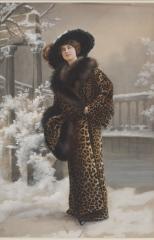
-
"John Wanamaker and Lord & Taylor ensembles", by Jean Moral
Voir la fiche de l'oeuvre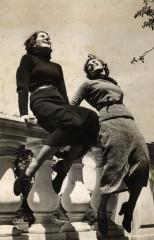
-
Souvenir of Paul Poiret's trip to Copenhagen
Voir la fiche de l'oeuvre
-
Denise Poiret by Delphi
Voir la fiche de l'oeuvre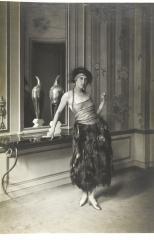
-
"Chanel ensembles", by Jean Moral
Voir la fiche de l'oeuvre
-
the Duchess of Windsor by François Kollar
Voir la fiche de l'oeuvre
-
"O'Rossen ensemble", by Jean Moral
Voir la fiche de l'oeuvre
-
The Henry Clarke collection
Voir la fiche de l'oeuvre
-
"Schiaparelli ensemble", by Jean Moral
Voir la fiche de l'oeuvre
-
"Alix ensemble", by Jean Moral
Voir la fiche de l'oeuvre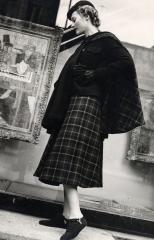
-
Photo of the house Fred's model
Voir la fiche de l'oeuvre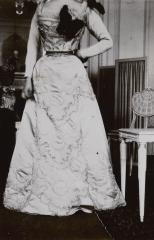
-
"Molyneux ensemble", by Jean Moral
Voir la fiche de l'oeuvre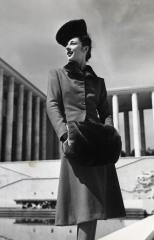
-
'Portrait of Mme Labourdette' by Adolphe de Meyer
Voir la fiche de l'oeuvre
-
'Monte Carlo ensemble, Maggy Rouff' by Egidio Scaioni
Voir la fiche de l'oeuvre
-
"Alix dress", by Jean Moral
Voir la fiche de l'oeuvre
-
'Nathalie Paley' by Dorvyne
Voir la fiche de l'oeuvre
-
"Robert Piguet ensemble", by Jean Moral
Voir la fiche de l'oeuvre
-
'Pierre Cardin, A/W 1958-59' by Willy Maywald
Voir la fiche de l'oeuvre
-
"Balenciaga ensemble", by Jean Moral
Voir la fiche de l'oeuvre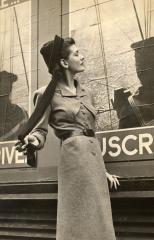
-
'Rita de Acosta Lydig' by Adolphe de Meyer
Voir la fiche de l'oeuvre
-
"Schiaparelli ensemble", by Jean Moral
Voir la fiche de l'oeuvre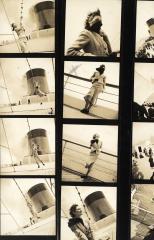
-
"Hermès ensemble", by Jean Moral
Voir la fiche de l'oeuvre
-
'Kristen McMenamy 3, London' by Juergen Teller
Voir la fiche de l'oeuvre
-
"Suit ensembles", by Jean Moral
Voir la fiche de l'oeuvre
-
'A Dazzling Beauty 1' by Miles Aldridge
Voir la fiche de l'oeuvre
-
'Frame, 2002' by Marcus Tomlinson
Voir la fiche de l'oeuvre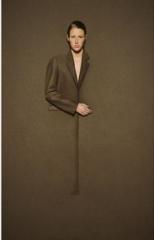
-
"Outdoor fashion", by Jean Moral
Voir la fiche de l'oeuvre
-
"Paris fashion", by Jean Moral
Voir la fiche de l'oeuvre
-
"Paris fashion", by Jean Moral
Voir la fiche de l'oeuvre
-
"Sharon, 1996", by Paolo Roversi
Voir la fiche de l'oeuvre
-
"Kate Moss in a bolero dress", by David Sims
Voir la fiche de l'oeuvre
-
"Aymeline Valade at the Grand Palais", by Mario Sorrenti
Voir la fiche de l'oeuvre
-
"Vittoria Ceretti in Jaipur", by Mario Testino
Voir la fiche de l'oeuvre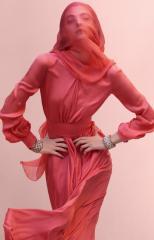
-
'In and out of fashion' by Viviane Sassen
Voir la fiche de l'oeuvre
-
'Balmain' by David Sims
Voir la fiche de l'oeuvre
-
'Blue Marine' by Deborah Turbeville
Voir la fiche de l'oeuvre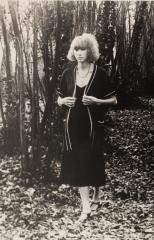
-
'Anja Rubik descending a staircase' by Inez & Vinoodh
Voir la fiche de l'oeuvre
-
'Isabeli Fontana, Natasha Poly & Anja Rubik' by Inez & Vinoodh
Voir la fiche de l'oeuvre
-
'Bathhouse' by Deborah Turbeville
Voir la fiche de l'oeuvre
-
'Gisele Bündchen' by Inez & Vinoodh
Voir la fiche de l'oeuvre
-
'Valentino : Women in the Woods' by Deborah Turbeville
Voir la fiche de l'oeuvre
-
'Anja Rubik & Edita Vilkeviciute' by Mario Testino
Voir la fiche de l'oeuvre
-
'Daria Werbowy, 2004' by Mario Sorrenti
Voir la fiche de l'oeuvre
-
'Viktor & Rolf/Balmain' by David Sims
Voir la fiche de l'oeuvre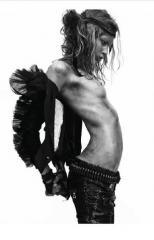
-
'Lara Stone' by Mert Alas & Marcus Piggott
Voir la fiche de l'oeuvre
-
'Daria Werbowy' by Mert Alas & Marcus Piggott
Voir la fiche de l'oeuvre
-
'Olivier Theyskens, 2007', by Mario Sorrenti
Voir la fiche de l'oeuvre


